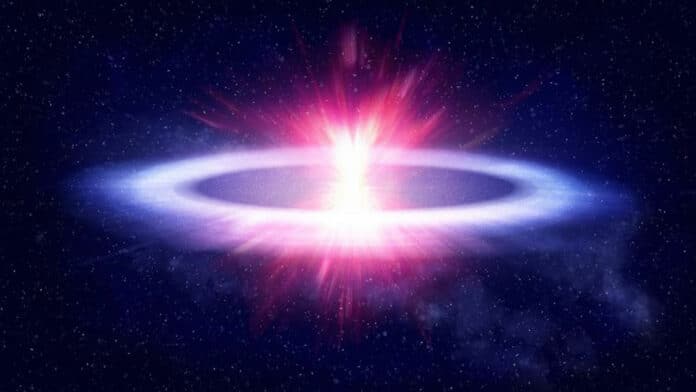Explosions of stars in the universe are almost always spherical, as the stars themselves are spherical. A new explosion, 180 million light-years away, has intrigued astronomers.
About the size of our solar system, the explosion challenges the current understanding of explosions in space. Its shape is similar to that of a highly flat disc. It appears much flatter than ever thought possible.
The explosion observed was a bright Fast Blue Optical Transient (FBOT) – an extremely rare class of explosion that is much less common than other explosions. In 2018, astronomers observed the first bright FBOT ‘AT2018cow’.
Scientists made the finding after they accidentally noticed a flash of polarised light. Using the astronomical equivalent of polaroid sunglasses and the Liverpool Telescope, which is housed at Liverpool John Moores University and situated on the island of La Palma, they could determine the blast’s polarisation.
Scientists measured the polarization, thereby measuring the shape of the explosion, effectively seeing something the size of our Solar System but in a galaxy 180 million light years away. They were then able to use the data to reconstruct the 3D shape of the explosion and map the edges of the blast – allowing them to see just how flat it was.
This flattest explosion is the most aspherical ever seen in space, with a shape like a disc emerging a few days after it was discovered. This section of the explosion may have come from material shed by the star just before it exploded.
Dr. Justyn Maund, Lead Author of the study from the University of Sheffield’s Department of Physics and Astronomy, said: “Very little is known about FBOT explosions – they just don’t behave like exploding stars should, they are too bright, and they evolve too quickly. They are weird, and this new observation makes them even weirder.
“Hopefully, this new finding will help us shed more light on them – we never thought that explosions could be this aspherical. There are a few potential explanations: the stars involved may have created a disc just before they died, or there could be failed supernovas, where the star’s core collapses into a black hole or neutron star, which then eats the rest of the star.”
Journal Reference:
- Justyn R Maund, Peter A Höflich. A flash of polarized optical light points to an aspherical ‘cow.’ Monthly Notices of the Royal Astronomical Society. DOI: 10.1093/mnras/stad539
